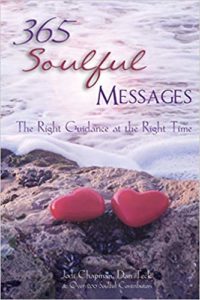A Birds-eye View
One of the perks of living in New England is experiencing the change of seasons. Although I am not a big fan of the cold winters, I do enjoy the migration of Juncos that visit my feeders come October. They are easy to please with an ample supply of regular birdseed. Spring offers an even better spectacle of birds with the arrival of Orioles, Grosbeaks, Red-winged black birds, Hummingbirds, and Indigo Buntings. I’ve tracked their arrival over the past decade or so and await their arrival during the first week of May. I make sure my nectar is prepared and feeders are readily available in hopes they nest close to my home thus ensuring frequent visits. I thoroughly enjoy watching the birds feast and flutter about. It’s a bit like eye candy for my viewing pleasure. Seriously, I am not hard to entertain!
Most bird enthusiasts have bird identification books close at hand, and I am no exception. I have done my research to identify them, what materials they prefer to build their nests, and what food will entice them to my feeders. I have experimented with different types of seeds, fruits, nectars, and nuts. When it comes to feeding birds, food is food and they will come. However, I have discovered a few tricks to draw them to my feeders, and I will share some tips and recipes to help you do the same.
Anyone who says birds, animals, and insects aren’t intuitive and intelligent have clearly never watched them in action for any length of time. Shut the TV off and watch nature for a change and you may agree with me. Birds are very particular about their nesting sites and you must do your homework if you hope to lure any of them into your nesting boxes. Dimensions, the size of openings, perches, and location are all critical components for successful occupancy. We must remember that their only job is to survive, reproduce, and protect their young for future generations to do the same. If we are blessed enough to witness their behavior, we must offer them opportunities to stay close to us.
Once a food source and nesting sites are established, we get to witness the miracle of their kind. It is important for me to keep their bird feeders clean and filled. It ensures that they come to feed often. I have cats, so I try to hang their feeders in safe locations. I have found that hanging my feeders from my clothes line is perfect in so many ways. They love the safety it provides, and I love the view.
If You Feed Them, They Will Come
Aside from traditional birdseed and sunflower seeds, I am going to share some recipes and tips the birds seem to enjoy year after year. Hummingbirds feed on nectar. I strongly discourage the use of buying premade nectar with the red dye. The red dye is not healthy for them and it is far from necessary. Hang your feeder near some flowers and they will come. It is so easy to make the nectar and have a supply readily available for refills. They are thirsty little critters, so you will go through several ounces a week!
Hummingbird Nectar
1 cup water
¼ cup white sugar
(4 parts water to 1 part sugar)
Dissolve sugar in warm water. It is not necessary to boil the water but you can if you want. Just be sure it has cooled before putting into your feeder. I usually make 3-4 cups of nectar at a time and store the excess in my refrigerator to prevent it from spoiling. I find that it is better to partially refill the feeder every few days instead of filling to the top. The reasons for this is because ants love it (you can try using an ant moat) and get inside. If the weather is hot and humid, the nectar can evaporate or spoil quickly. Regular cleanings help keep the birds healthy. Don’t be surprised if you catch an oriole at your feeder. Although the water to sugar ratio is different for them, they will drink it if accessible to them.
Simple Oriole Nectar Recipe #1
5 parts water/1 ¼ cups water
1 part white sugar/ ¼ cup sugar
Complex Oriole Nectar Recipe #2 (recommended to attract more birds)
1 cup grape jelly
½ cup white sugar
1 cup water
½ teaspoon pure orange extract
Combine jelly, water, and sugar in a pan. Bring to a boil. Add orange extract. Simmer for a few minutes, stirring frequently. Cool to room temperature. Add to an oriole feeder. Keep excess refrigerated.
Easy Oriole Recipe #3 (This one work every time!)
Orioles are attracted to oranges and grape jelly. I combine the best of both worlds by cutting oranges in half. Either squeeze the juice or scoop out leaving lots of pulp behind. Fill with a generous tablespoon of grape jelly. Put in a hanging tray feeder with sunflower seeds (make sure you put the orange on the inside edge of the feeder so they can perch) then sit back and enjoy. You may also notice that catbirds and mockingbirds like this offering as well.
QUICK TIP: I save my orange halves throughout the year and store them in the freezer. When one gets yucky, I simply grab a frozen one and replace it.
Rose-breasted Grosbeaks
I stumbled across this gem by accident. When my daughters were young, they liked to eat cherries but left a lot of flesh on the pit. I put them in a hanging tray feeder and the birds loved them! Crunch and munch all the way. Try it!
Indigo Buntings
I have been fortunate enough to catch these at my feeder a few times. They never seem to stay more than a week, but I noticed that they prefer the smaller mixed seeds with millet. They are also attracted to Nyjer seeds, thistle, and sunflower hearts.
Feeding the birds isn’t exactly a cheap hobby, but it’s certainly entertaining and is the kind of gift that keeps on giving.



